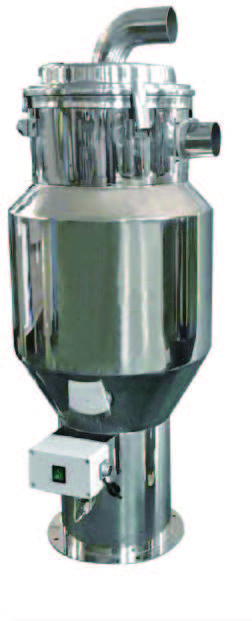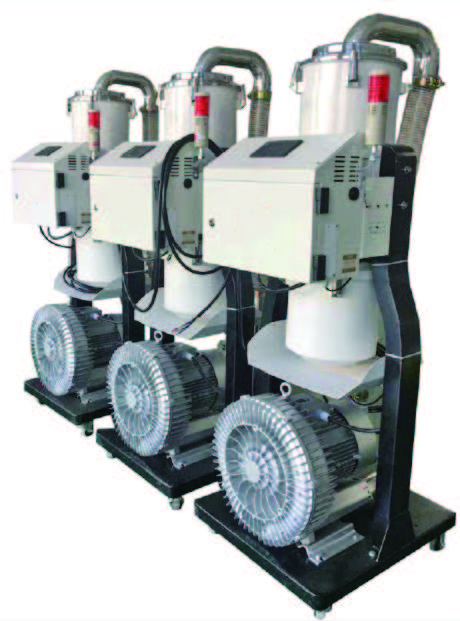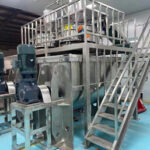Vacuum conveyors
Product view
Vacuum conveyors
Related Articles, Technology and Resources
How the Vacuum conveyors works
Vacuum conveyors can improve feeding efficiency and reduce labor cost. Easy to clean and maintain, low energy consumption and low noise.
The conveying process is completely closed, no dust pollution.
With automatic lack of material alarm to remind workers to feed, equipped with a reverse blowing tank and fast exhaust valve, reverse blowing instantaneous air volume, material is not easy to block.
Vacuum conveyors fan generate negative pressure, air pressure difference drives the material movement, forming vacuum logistics. Materials are sucked into the vacuum conveyors through the pipeline by negative pressure, and the filter element in the conveyors isolates the material from the negative pressure air. After the negative pressure stops, materials are discharged by own weight. At the same time, when the material is discharged, the back blowing is opened under positive pressure, and the material attached to the surface of the filter element is blown off, and materials attached to the machine is also blown off. The back valve is closed in the discharging and back blowing link, and the negative pressure and feed valve is opened for the next suction process.
Applications
Containment: Vacuum conveyors provide complete containment of the material being transported, ensuring that the material stays in place and doesn’t become airborne during transport.
Ease of Use: Vacuum conveyors are simple to use and require minimal operator training. They can be easily integrated into existing systems and production lines.
Versatility: Vacuum conveyors are versatile and can be used to transport a wide range of materials, including powders, granules, and pellets, as well as delicate and fragile items.
Speed: Vacuum conveyors are capable of handling high volumes of material at high speeds, making them ideal for use in fast-paced production environments.
Sanitation: Vacuum conveyors are designed for easy cleaning and maintenance, making them suitable for use in food and pharmaceutical applications.
Space-saving: Vacuum conveyors take up minimal floor space, which is an important consideration for many manufacturers who are working with limited floor space.
Energy-efficient: Vacuum conveyors are energy-efficient and consume minimal power, making them an environmentally friendly solution.
Cost-effective: Vacuum conveyors are cost-effective and offer a low total cost of ownership when compared to other material handling solutions.


Industrial mixers are commonly used in the plastic industry to blend, homogenize, and disperse additives into polymer resins. There are several types of mixers that can be used in the plastic industry, including:
-
High-Speed Dispersers: These are high-speed mixing machines that are ideal for mixing additives into resins. They use high-speed rotors to rapidly break down agglomerates and distribute the additives evenly.
-
Dual Shaft Mixers: Dual shaft mixers use two counter-rotating rotors to mix the materials. They are commonly used to mix highly viscous materials, including polymer resins.
-
Continuous Mixers: Continuous mixers are designed for continuous operation and are ideal for large-scale production runs. They are commonly used to mix high-volume batches of plastic materials.
The type of mixer used for plastic applications depends on the specific requirements of the process, including the viscosity of the material, the desired final product, and the volume of production.

